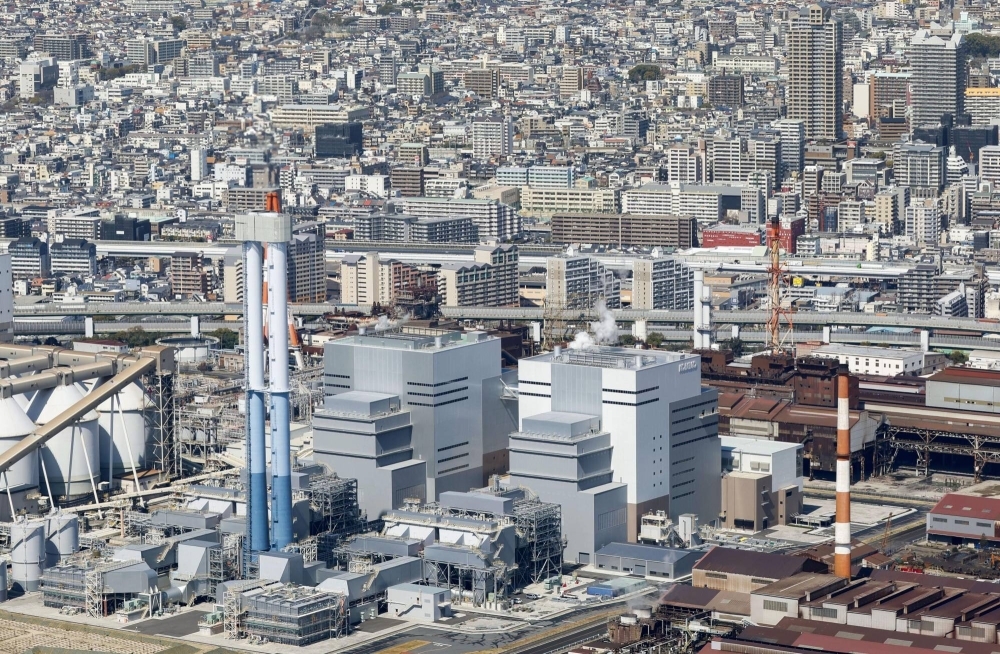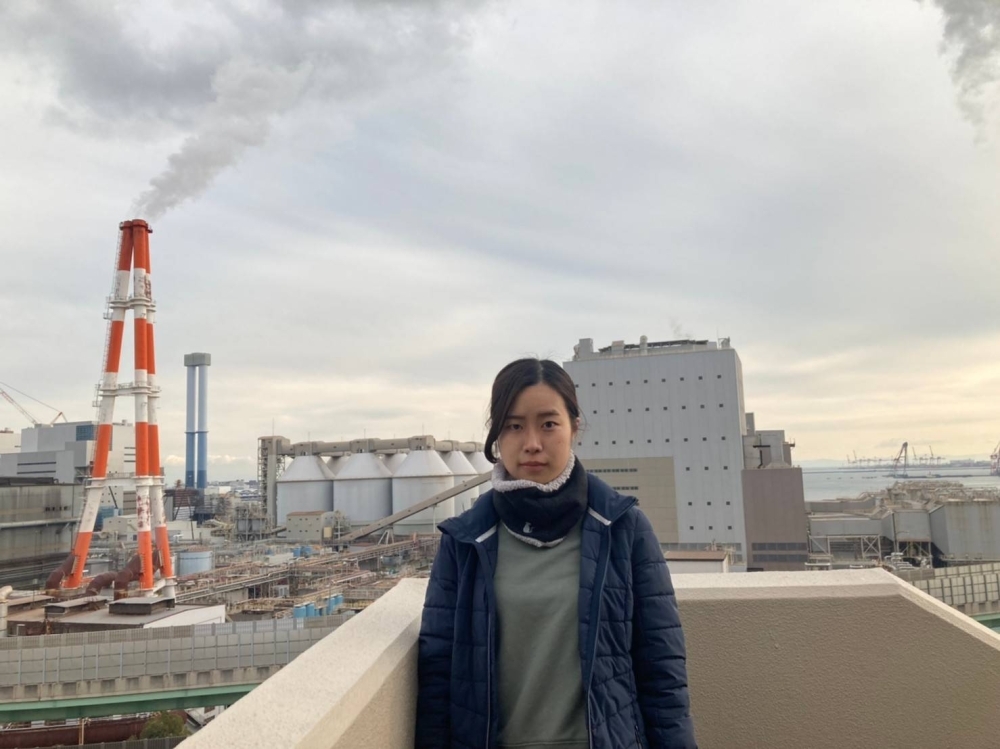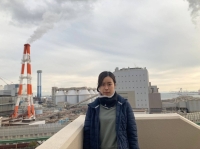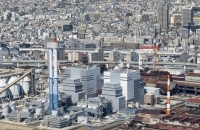This summer, when much of the world was reckoning with what comes with a warming world, there was a bright spot for people involved in the fight against climate change.
On Aug. 14, a judge in Montana ruled in favor of young people suing the U.S. state, saying its failure to consider climate change when approving fossil fuel projects was unconstitutional. The case marked the first major win for plaintiffs of such a lawsuit in the country.
In Japan, the Montana ruling has inspired groups of citizens who are locked in prolonged court battles with companies building coal-fired power plants and governments greenlighting their operation.
“It was extremely positive news,” says Erina Imai, a 26-year-old resident of Osaka Prefecture, about the Montana case. She was among citizens who sued the central government — unsuccessfully — over its approval of the expansion of a coal-fired power plant in the city of Kobe.
Japan’s climate activists see their lawsuits as part of wider efforts to highlight the country’s heavy reliance on coal — currently over 30% — for its energy needs. Japan aims to reduce the percentage of coal-fired power to 19% in 2030, which stands in contrast to moves by other major economies to phase it out by that year, if not sooner.
These cases are part of a growing wave of climate litigation targeting governments and businesses worldwide. Indeed, the latest status review on climate litigation by the United Nations Environment Program (UNEP), released in July, showed that the number of climate cases had more than doubled over five years, reaching 2,180 as of last December.
“Climate litigation represents a frontier solution to change the dynamics of the fight against climate change,” the report said. “Governments and private sector entities are being increasingly challenged and held to account.”
But there are barriers to climate litigation in Japan, with the main ones being the limited options for legal interventions and a lack of recognition among judges and society in general that climate change is a human rights issue, experts say.
Nonetheless, plaintiffs and activists in the country say it’s too early to give up on their fight, pointing to how legal victories overseas initially seemed near-impossible, as well as the growing engagement of youth in climate activism and a silver lining in a recent domestic court ruling, where a judge hinted at a possible shift in the future.
Suing states and businesses
According to the UNEP, the number of climate-related cases has steadily gone up, from 884 in 2017 to 1,550 in 2020 and 2,180 in 2022. The U.S. leads the pack, with 654 cases in 2017, 1,200 in 2020 and 1,522 in 2022. Among other countries, Australia is a litigation hot spot, with 127 suits being filed.
The reason for the recent rise in cases is threefold, explains Masako Ichihara, a visiting researcher at the Research Institute for Humanity and Nature in Kyoto who studies climate litigation in Japan and elsewhere.
“The No. 1 reason is that the international regime for tackling climate change is not functioning,” she says. “Ever since 1992, when the United Nations Framework Convention on Climate Change was adopted, measures against climate change have been led by national governments or international consensus, but emissions are continuing. At the same time, people have started to keenly feel the effects of climate change through a series of serious disasters caused by extreme weather events.”
Another reason people are turning to the courts, Ichihara says, is the growing international consensus of regarding climate-related damage as a human rights issue, as seen in a resolution adopted last year by the U.N. General Assembly. In the landmark resolution, the assembly declared that access to a clean, healthy and sustainable environment a universal human right.
“Courts are said to be the last bastion of human rights,” she says, noting that this has given momentum to climate litigation.
Lastly, the idea that people can hold governments and businesses accountable over damage caused by climate change or inaction over the issue — much like damage from air pollution — really caught on after the adoption of the Paris Agreement in 2015.
Under the legally binding treaty — which says the global temperature increase should be kept to well below 2 degrees Celsius above preindustrial levels — countries must set out their climate actions plans. That means it is possible to objectively identify gaps between those goals and actual implementation, creating more opportunities for legal action, Ichihara says.
Climate litigation can also target businesses, such as one suit filed last year by 16 Puerto Rican municipalities seeking to hold the fossil fuel industry responsible for the damage caused by a series of storms including Hurricane Maria in 2017.
Coal-fired power plants
So far, Japan has seen just four lawsuits, all by residents and concerning the construction and operation of coal-fired power plants in their areas. A fifth lawsuit, which predates the four, is sometimes included in the count. In that case, environmental activists and lawyers in 2011 filed for out-of-court conciliation, asking 11 utilities to cut carbon emissions, with the rejection of that mediation leading to a court case. A polar bear and residents of Japan and the Southern Pacific island nation of Tuvalu were included as plaintiffs.
The first of the four main cases case, a civil suit filed in September 2017 at the Sendai District Court, involved the operation of a 112,000-kilowatt plant in the city run by Sendai Power Station. Local residents asked for operations to be halted, saying their “personal rights” were being threatened due to greenhouse gases emitted by the plant. But judges denied the request, and a 2021 ruling handed down by the Sendai High Court, in which the plaintiffs’ claim was rejected again, concluded the case.
Two other cases — a civil and an administrative suit, the former ongoing and the latter unsuccessful — were filed over the construction of two additional coal-fired power generation units with a combined output capacity of 1.3 million kW by Kobe Steel and its subsidiary at its coal power plant. An administrative suit is a process where individuals can file a complaint against a government decision and ask for it to be nullified.
The fourth case involves a 1.3 million-kW plant in Yokosuka, Kanagawa Prefecture, built by Jera, a joint venture between Tepco Fuel & Power, a wholly owned subsidiary of Tokyo Electric Power Company Holdings, and Chubu Electric Power. Residents filed an administrative lawsuit against the central government in 2019, saying its approval of an environmental impact assessment submitted by the plant operator was flawed and should be rescinded.
While the plaintiffs’ losses in the Sendai case and the administrative case filed in Kobe have been finalized, the other two — the civil case in Kobe and the administrative suit in Yokosuka — are pending at high courts after plaintiffs appealed rejections in district courts that were handed down earlier this year.
Takeshi Shimamura, a professor of law at Kobe University who is also one of the plaintiffs in the Kobe civil case, says the environmental lawyers behind the cases have chosen to focus on coal-fired power plants for tactical reasons, in consideration of the limited theoretical scope for legal success in Japan.
“Unlike in recent cases in the Netherlands and Germany, where judges share the idea that they need to rule on human rights infringements caused by climate change, judges in Japan tend to regard climate issues as a policy matter, and it is thus not their job to intervene,” Shimamura says. “Judges here see their role as ruling just on specific rights and interests infringements of specific individuals.”
Under such circumstances, the lawyers have adopted a two-pronged approach — making claims about the damage to health the citizens will incur through the emission of air pollutants such as PM2.5, and also arguing about damage brought on by climate change.
PM2.5, fine particles with a diameter of 2.5 micrometers or less, is known to trigger a range of respiratory and cardiovascular problems for those who inhale them. Plaintiffs have argued that emissions of PM2.5 — which is produced by not only burning coal but also through chemical reactions in the air of substances contained in exhaust gas — threaten their right to be protected from health damage, as well as their right to live peacefully without concerns for health risks.
“The lawyers are making the claim that the plaintiffs suffer health damage from polluted air emitted by the plant, to use it as a foothold through which to establish that the plant is also illegal from the global warming perspective,” Shimamura says.
However, the rulings so far have denied such claims, with judges saying that the plaintiffs lack the right to file a lawsuit on climate matters.
On top of this, there are other factors that make it very hard for people to take climate issues to court.
Experts point to the fact that, unlike in some other countries, Japanese courts are not set up to allow citizens groups or nongovernmental organizations, except for designated consumer groups, to file lawsuits on behalf of citizens.
Shimamura acknowledges that, in the short term, the chances of judges shifting their stance are slim. But internationally, legal opinion has started to shift, and Japanese judges have shown, albeit slightly, that theirs might too.
In Germany, for example, a symbolic case filed by a Peruvian farmer demanding that utility RWE contribute to the cost of adapting to climate change for a city in Peru, where the company has no operations, based on its contribution to global carbon emissions, has been allowed to proceed. And in the Netherlands, in 2019 the Supreme Court ordered the government to make specific emissions cuts — the first time an administration had been told to by a court.
In Japan, in the April 2022 Osaka High Court ruling on the Kobe coal plant administrative suit, judges said a right not to be harmed by carbon emissions should be pursued as part of overall government policy. But they also said that “this judgment is based on the current social situation, and does not deny the possibility” that such a right “will be determined and recognized as a personal interest due to future changes in the social situation in Japan and abroad.”
The judges did not elaborate on what those changes might look like.
Growing interest
Emboldened by the recent court cases abroad, a growing number of people in Japan are becoming interested in addressing climate change through legal means — if not through outright lawsuits.
Climate Case Japan, a group of citizens working to promote the idea that climate change is a human rights issue, was formed in July 2021 after being inspired by the news two months earlier that a Dutch court had ordered international oil company Royal Dutch Shell to cut carbon dioxide emissions.
The group, made up of 13 members in their 20s to 50s in the Kansai and Kanto regions, consulted with environmental lawyers about filing climate-related lawsuits in Japan, but decided to change tactics after learning about the extremely high hurdles for legal victories, says member Soyo Hinata. The group is now preparing to file a petition for human rights relief with the Japan Federation of Bar Associations.
“Many mothers with small children have a sense of crisis about climate change,” says Hinata, 36, herself a mother who works as a freelance photographer. “(Due to extreme heat) it is becoming harder to let children play outside. In school, physical education classes including swimming are being canceled. Parents are having to drive their children to school.”
Imai, for her part, joined the Kobe administrative suit as a plaintiff in 2018 while studying environmental economics at Kobe University.
Imai says she had for years been interested in climate issues and the nation’s continued reliance on coal power. But until a few months before joining the suit, she did not know that Kobe Steel’s coal-fired power plant was located in a residential district a few kilometers away from campus, only discovering this after attending a forum in Kyoto organized by environmental NGO Kiko Network and hearing the stories of plaintiffs.
As one of the few younger plaintiffs in the Kobe suit, she attended most of the dozen court hearings and even read out a statement in court.
Imai is well aware of the benefit that young people’s participation in the suits — which remains rare in Japan — can bring.
“Because I was a rare presence in court, my comments were often picked up by the media reporting the trial,” she says. “I think it means a lot in terms of making this problem of coal-fired power in Kobe better known in society.”
She acknowledges that climate litigation is an extremely time-consuming approach for a problem in need of urgent solutions. The Kobe administrative suit that ended in a defeat for the plaintiffs took four years to be finalized. But she has not lost hope in waging legal battles.
“As I studied about the group behind the Montana suit (legal nonprofit group Our Children’s Trust), I realized that the case was one of many that the group had brought to courts across the U.S.,” she says. “Japan has seen four suits and that’s far from enough. We can use lessons learned from one suit in another, to brush up future cases.
“The Montana case has made me feel that we need to keep trying.”














